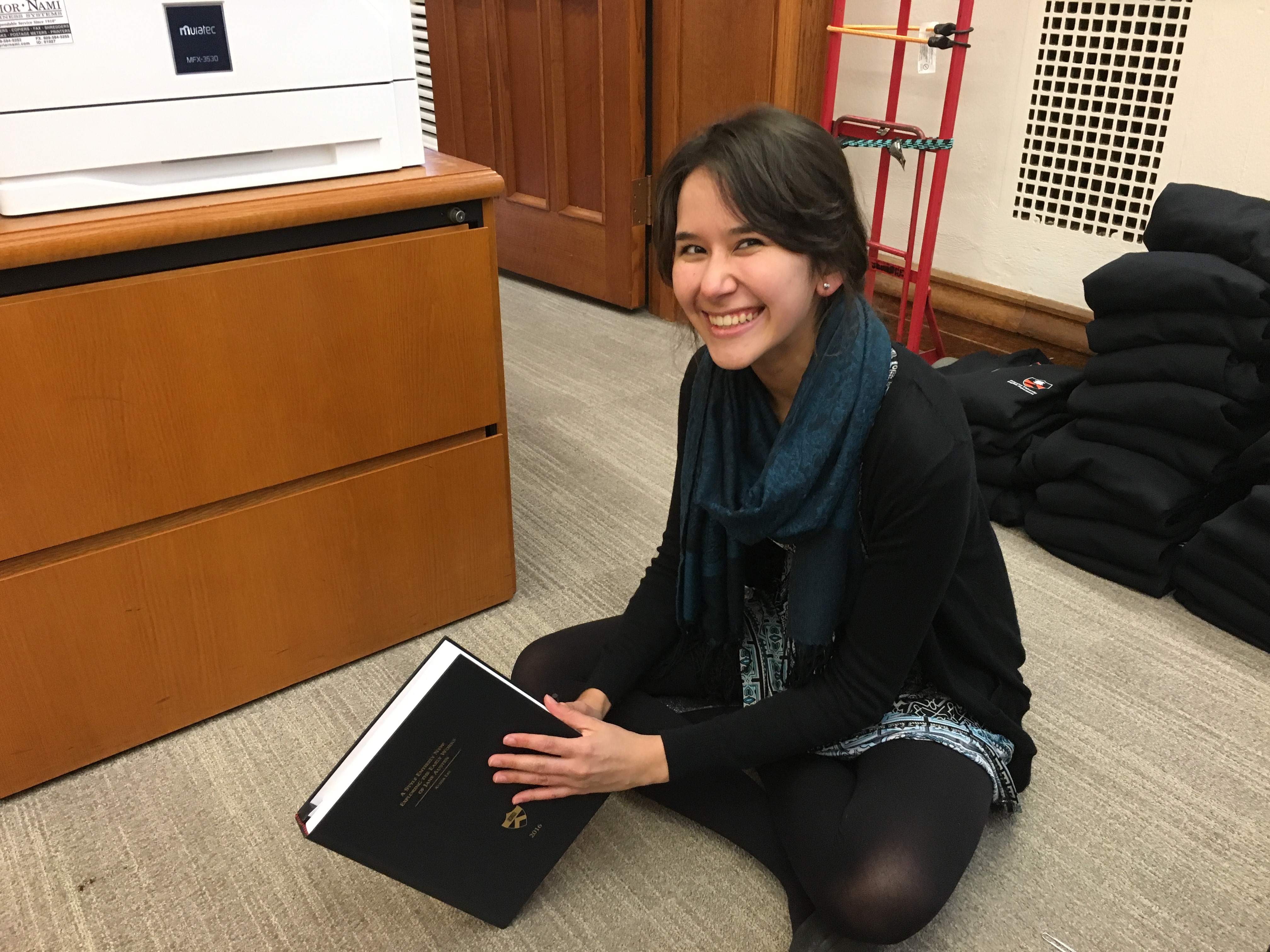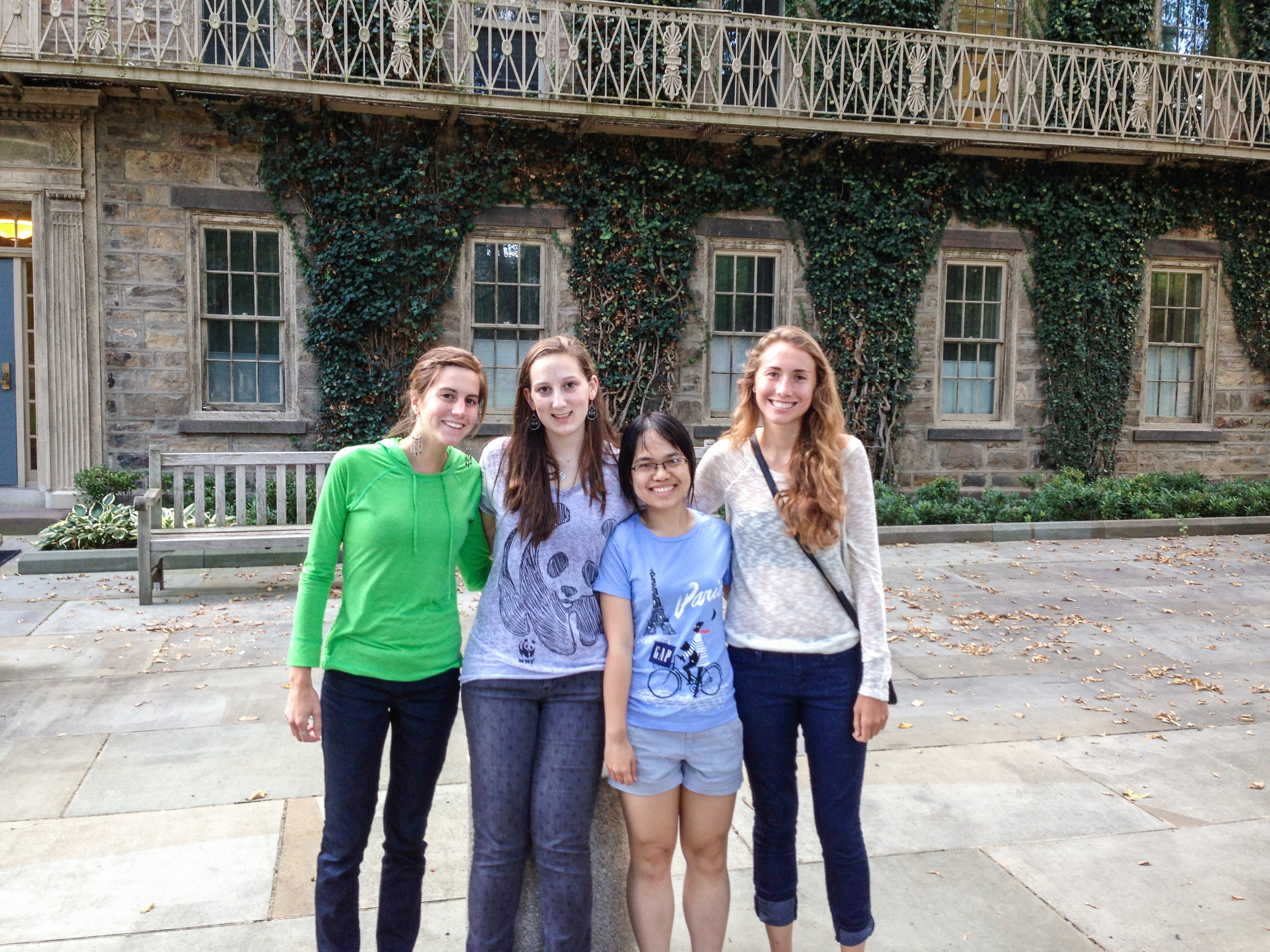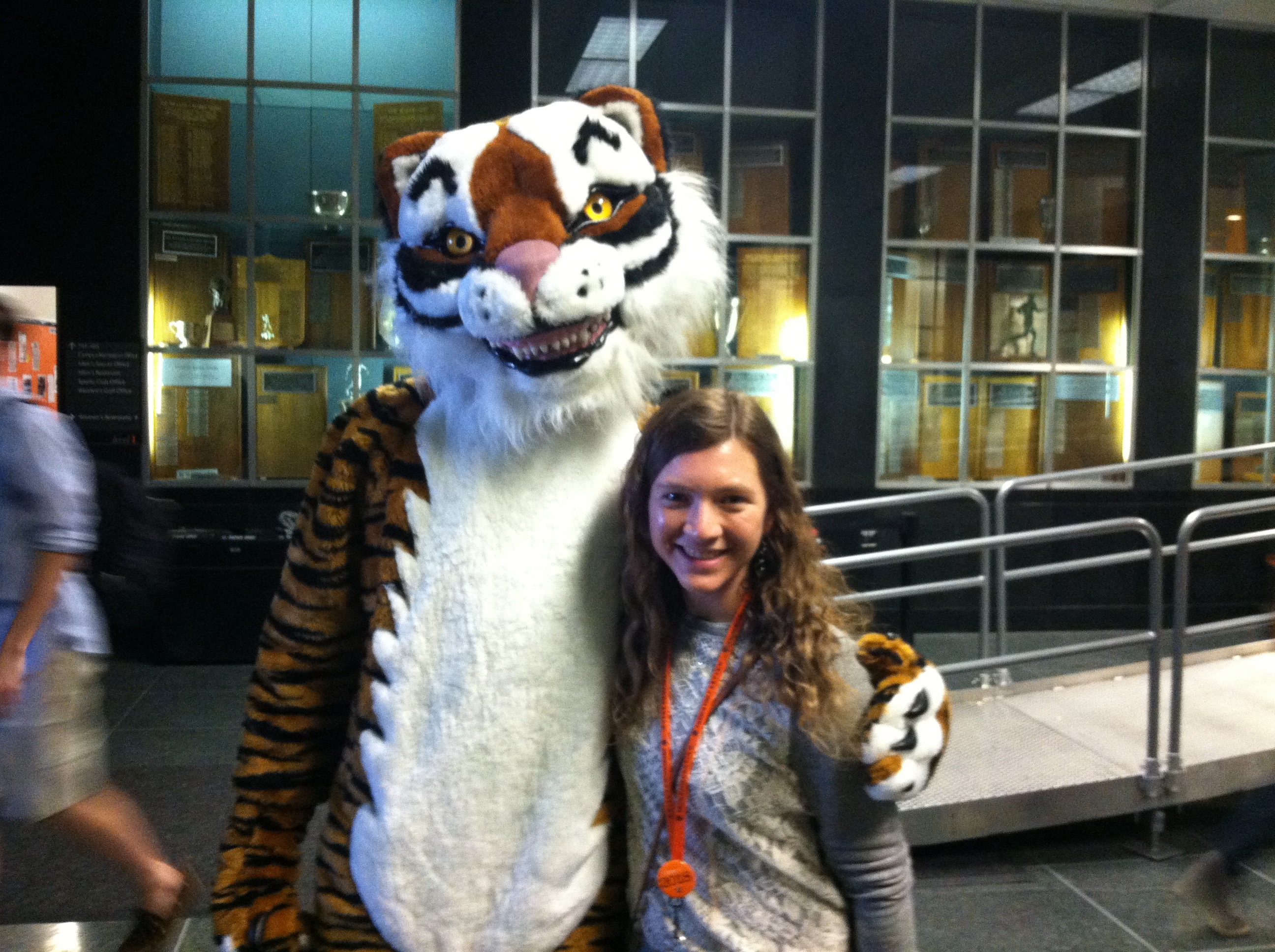Hello from the other side of the FitzRandolph gates!
I did indeed graduate Princeton a couple months ago (don't worry, that all worked out). Although, the last months of school were so crazy, I had no chance for closure on this blog! Since I'd really love to share how my time at Princeton wrapped up, I'm going to make a few final posts.
First up, an update on the great and terrifying:

The senior thesis is the culmination of a year's research, thought, and writing. You might remember I was sketching out a senior thesis on Jane Austen's juvenilia back in October? I am very happy to tell you that by its April 2016 deadline, it was finished. And I loved it!
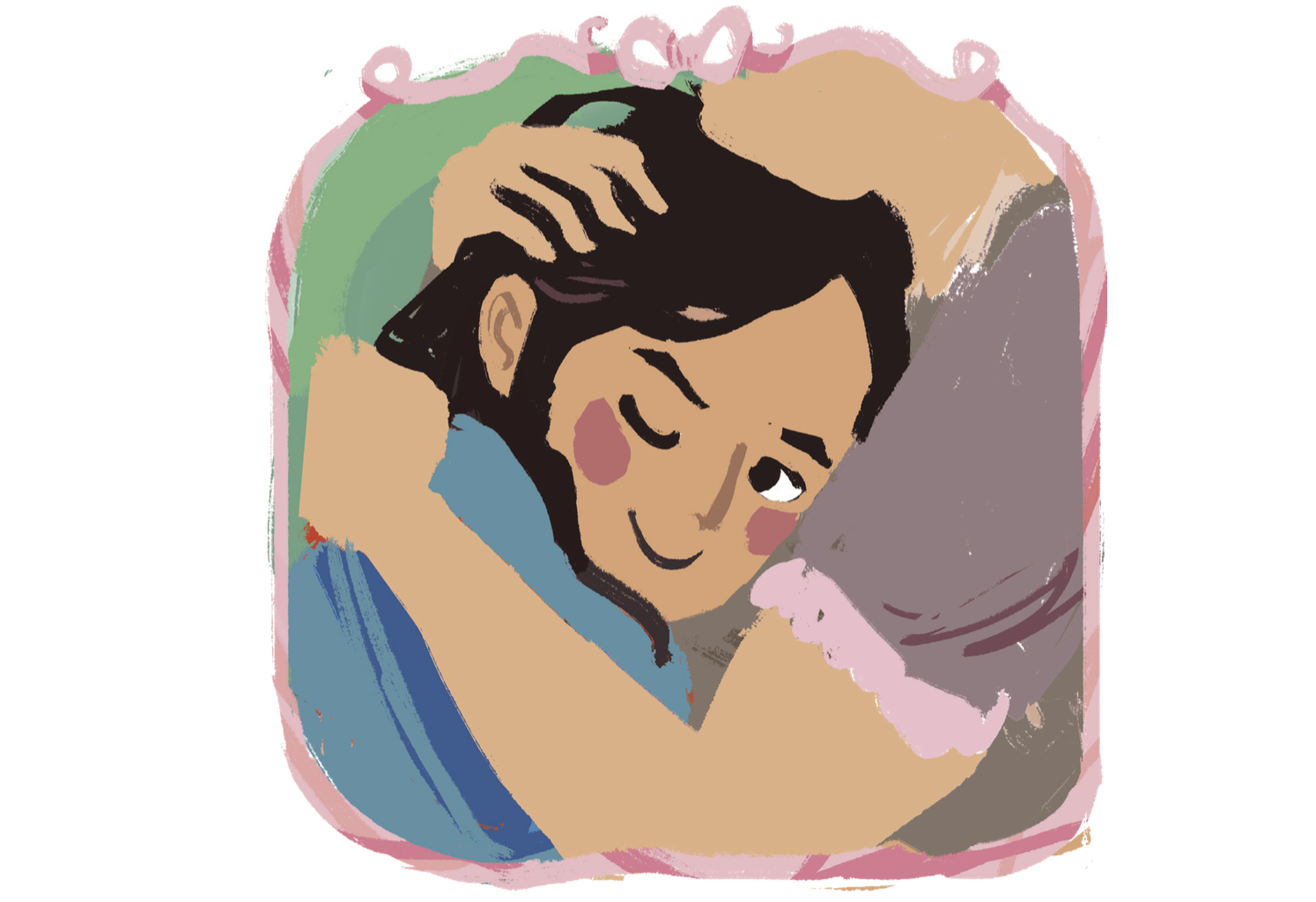
Also, it had pictures.
What was it about again?
For only writing six complete novels, Jane Austen has done pretty well at drawing a crowd and marking her place as oh, I don't know, an unparalleled cultural and literary phenomenon.
And yet despite her oeuvre's fame, nestled into the collection well before bright and sparkling "Pride and Prejudice," is a body of work that has little public voice. My thesis explored the stories and writing of Jane Austen commonly known as the juvenilia, work written while she was eleven to seventeen years old.
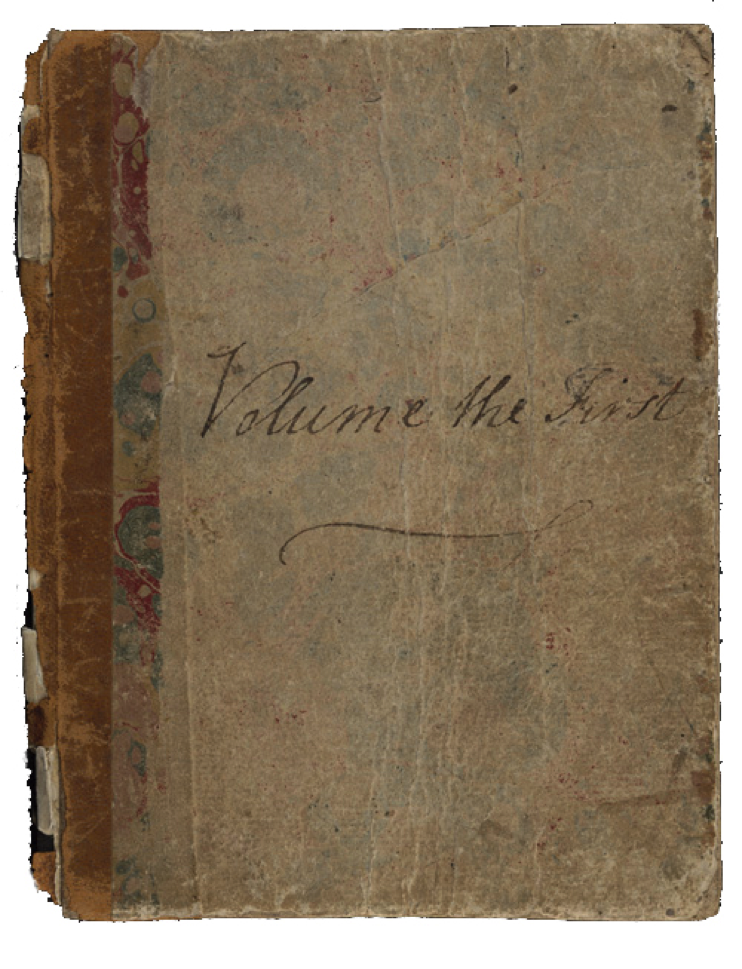
The first 30 pages of my thesis presented a brief look at Jane Austen, then examined the criticism and nature of these earliest texts (which are amazing, as I hope you'll see). The next 70 or so pages of my thesis explored four specific texts critically, plus a creative component. What does that mean? That the English department is the best department.
I. Bringing "The Mystery" to Life
In theater, characters typically act in the paradigm where no audience exists; Jane Austen's short play "The Mystery" takes that trope and runs. Most of the play consists of characters whispering to each other, blithely unbothered by the fact that the plot is a total mystery to the audience.
You can find the play online in the middle of this article!
Since the Austen family performed with each other as an early version of home theater, for the creative portion of this section, I brought the play home to my own family. I performed "The Mystery" with them over Christmas, and then edited and analyzed what it meant to give bodies to the elusive, yet rollicking script.
Some snapshots of the play:
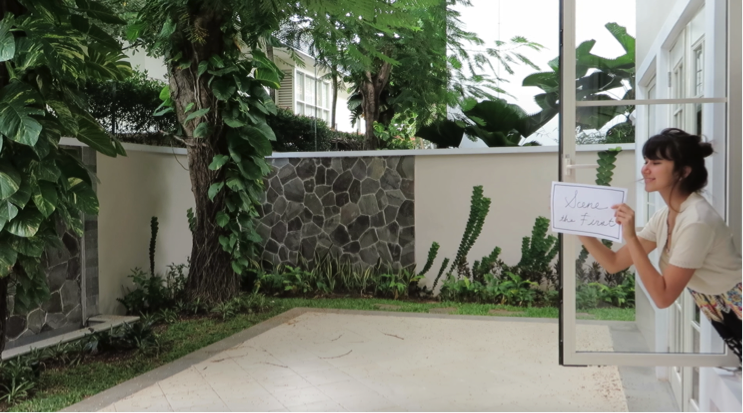
Scene the First, as I introduced from the window.
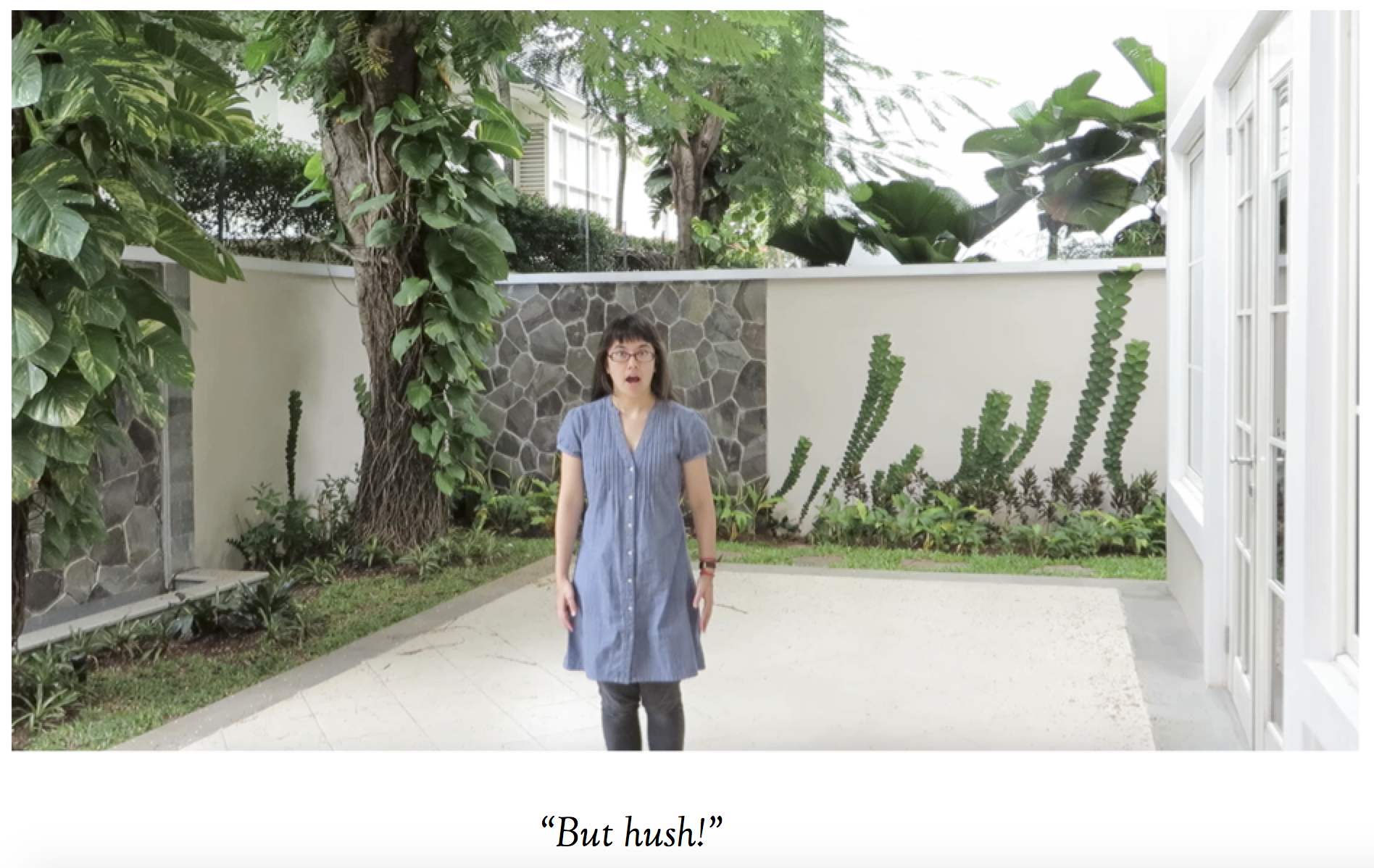
A great way to start off a play.
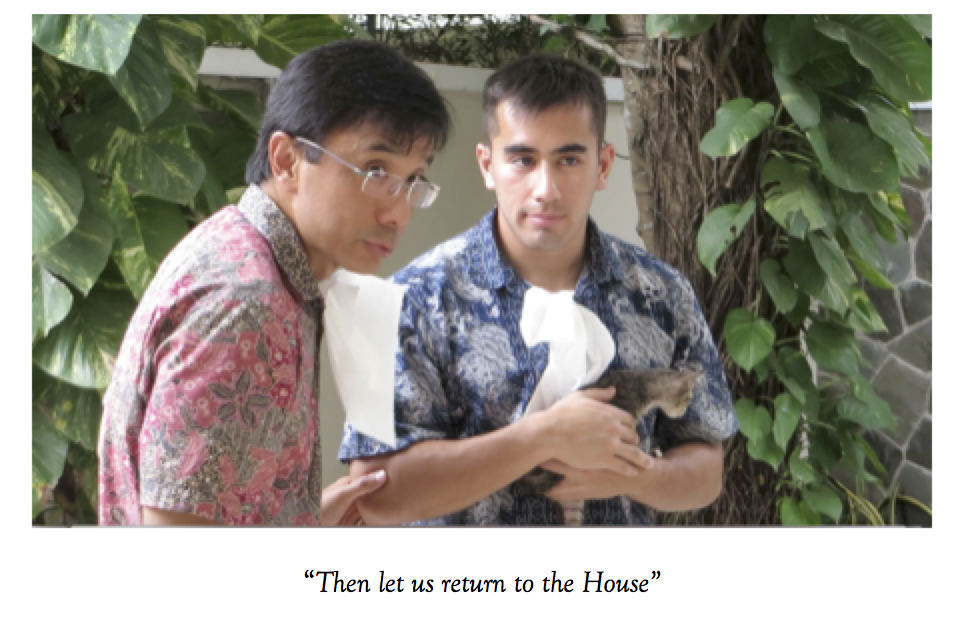
Those are indeed napkin cravats. Also our cat, Yupi!
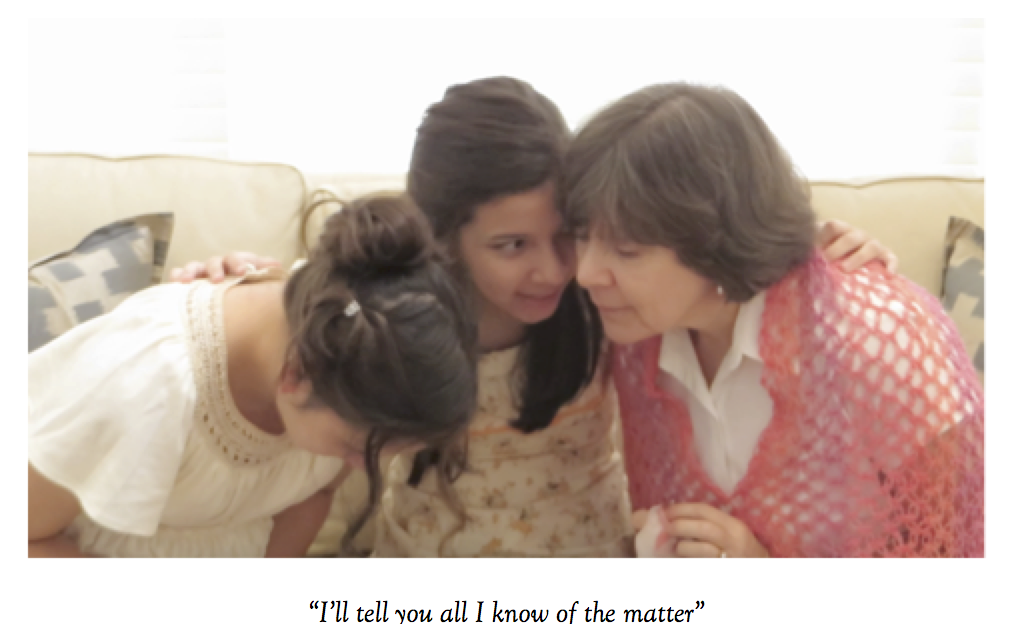
And what did Daphne whisper, in a voice inaudible to the camera? Who knows.
II. Defenestration with "Frederic and Elfrida"
We tend to have a very prim view of our famous authoress. But the visual language in the late 18th century caricatures that were around young Jane Austen were far from proper. Check out Mark Bill's comparison of a comic satirizing the royal class in the late 18th century, and then the late 19th century.
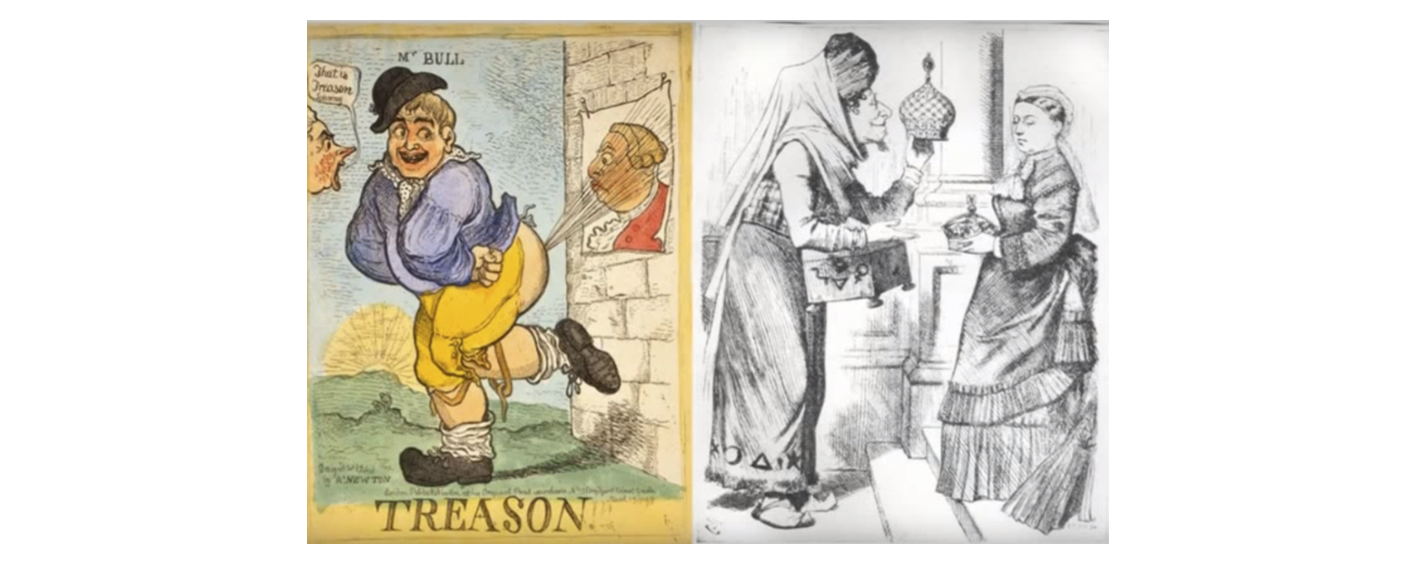
One is definitely more exciting!
Flavors of the caricature style show up in the juvenilia's "A History of England," illustrated by Jane Austen's older sister Cassandra.
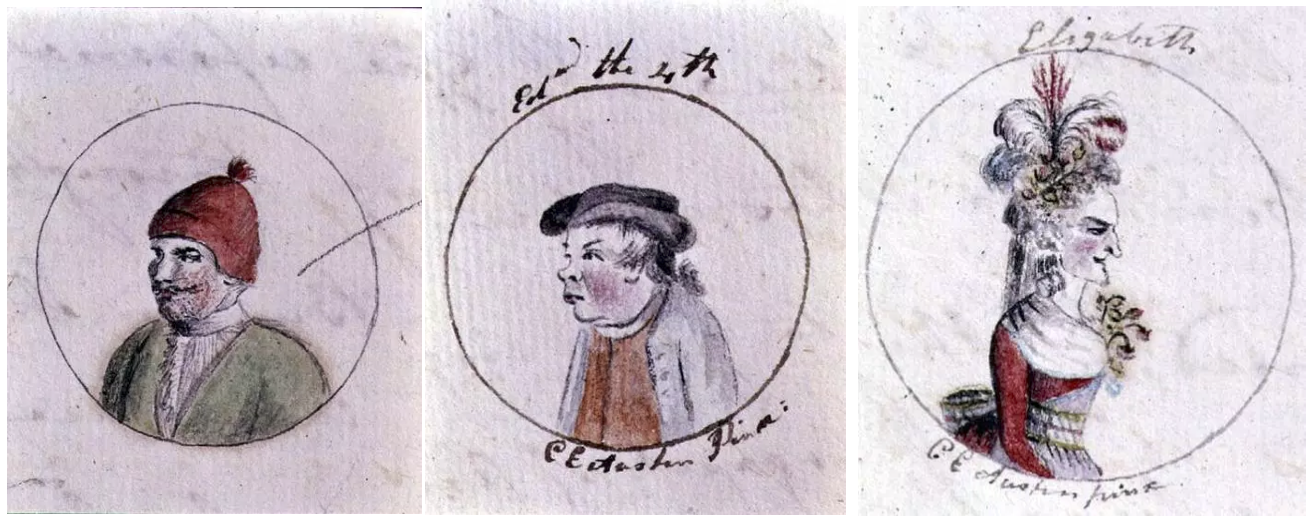
I analyzed "Frederica and Elfrida" through the lens of 18th century prints, hoping to capture and enjoy the wild energy and exaggeration that lies laughing under her careful language.
For example: "From this period, the intimacy between the Families of Fitzroy, Drummond, and Falknor daily increased, till at length it grew to such a pitch, that they did not scruple to kick one another out of the window on the slightest provocation."


This was a fun chapter indeed!
III. The Sweet Deceit of "Love and Freindship"
You've definitely seen the art of C.E. Brock and Hugh Thompson, Jane Austen's early champions of illustrations. They feature beautifully proportioned ladies and gentlemen, neatly dappled in watercolors and often framed by decal of curling ribbons.
I don't claim to have their artistic prowess, but I did have a ton of fun parodying the style in contrast to young Austen's story, "Love and Freindship" (yes, spelled "e" before "i") in particular.
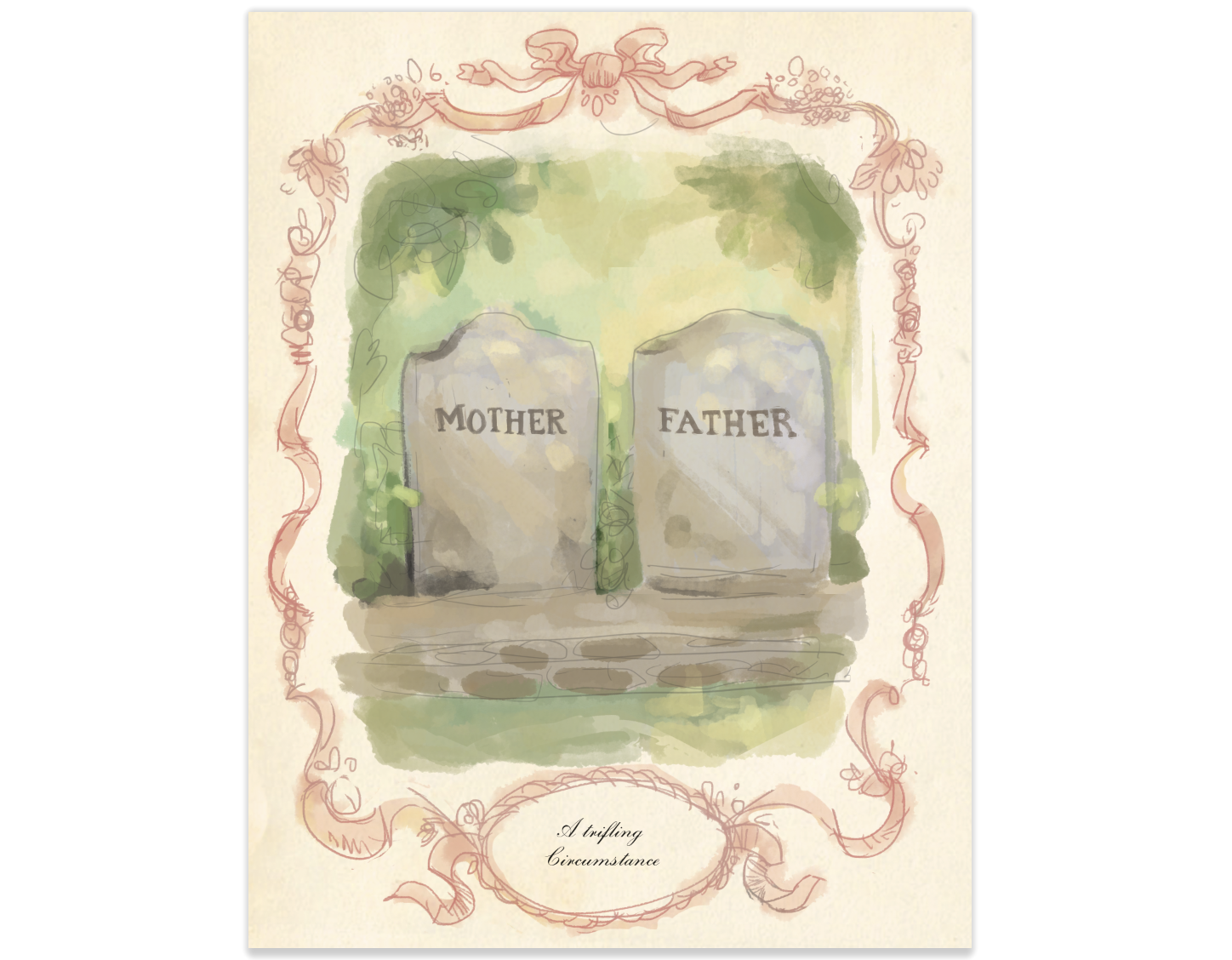
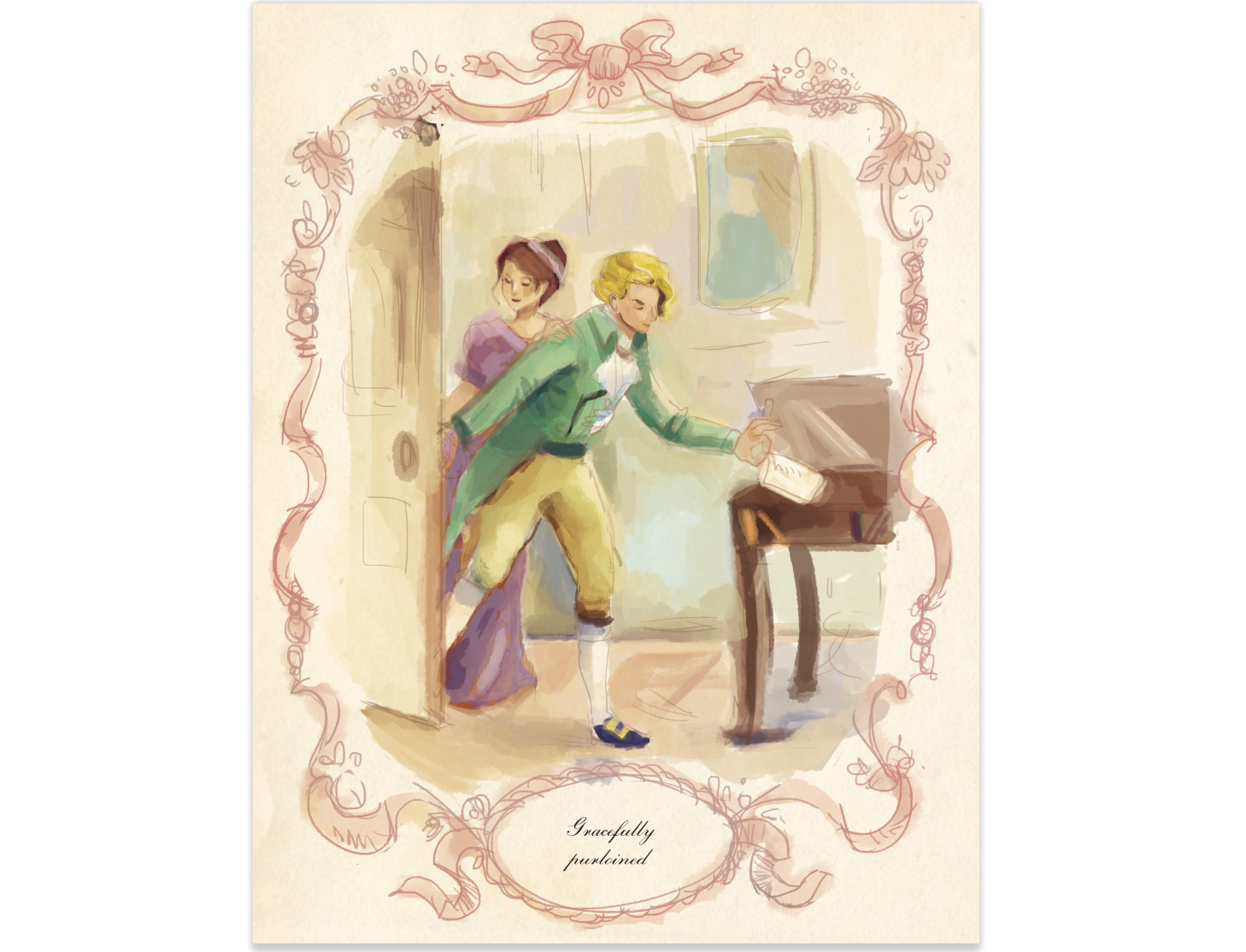
When Augustus takes money from his father, he didn't steal from his desk, he "gracefully purloined from his father's escritore."
Things don't end well for the stories' beaux:
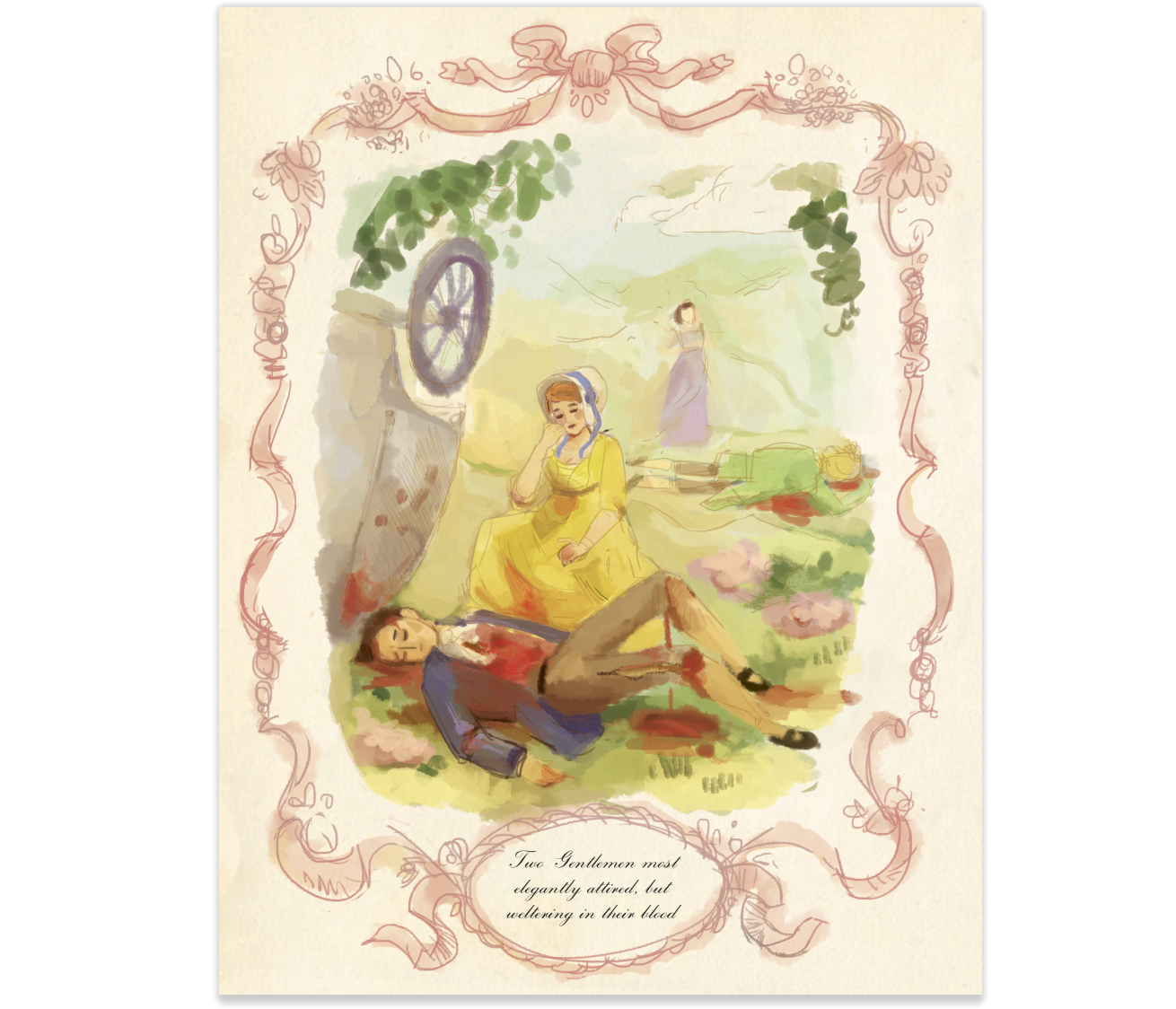
Laura and company come across a terrible scene of "two gentlemen, most elegantly attired, but weltering in their own blood." Note how she first notices their dapper fashion, though!
IV. A Day Well Spent with "The Beautifull Cassandra"
In the very last section, I dove into the delicious "The Beautifull Cassandra" (yes, two "L"s. She was an idiosyncratic young speller!).
It is a novel of twelve tiny chapters, each about two sentences long and filled with laughter. On her adventure, Cassandra steals a bonnet, passes up a beautiful man,
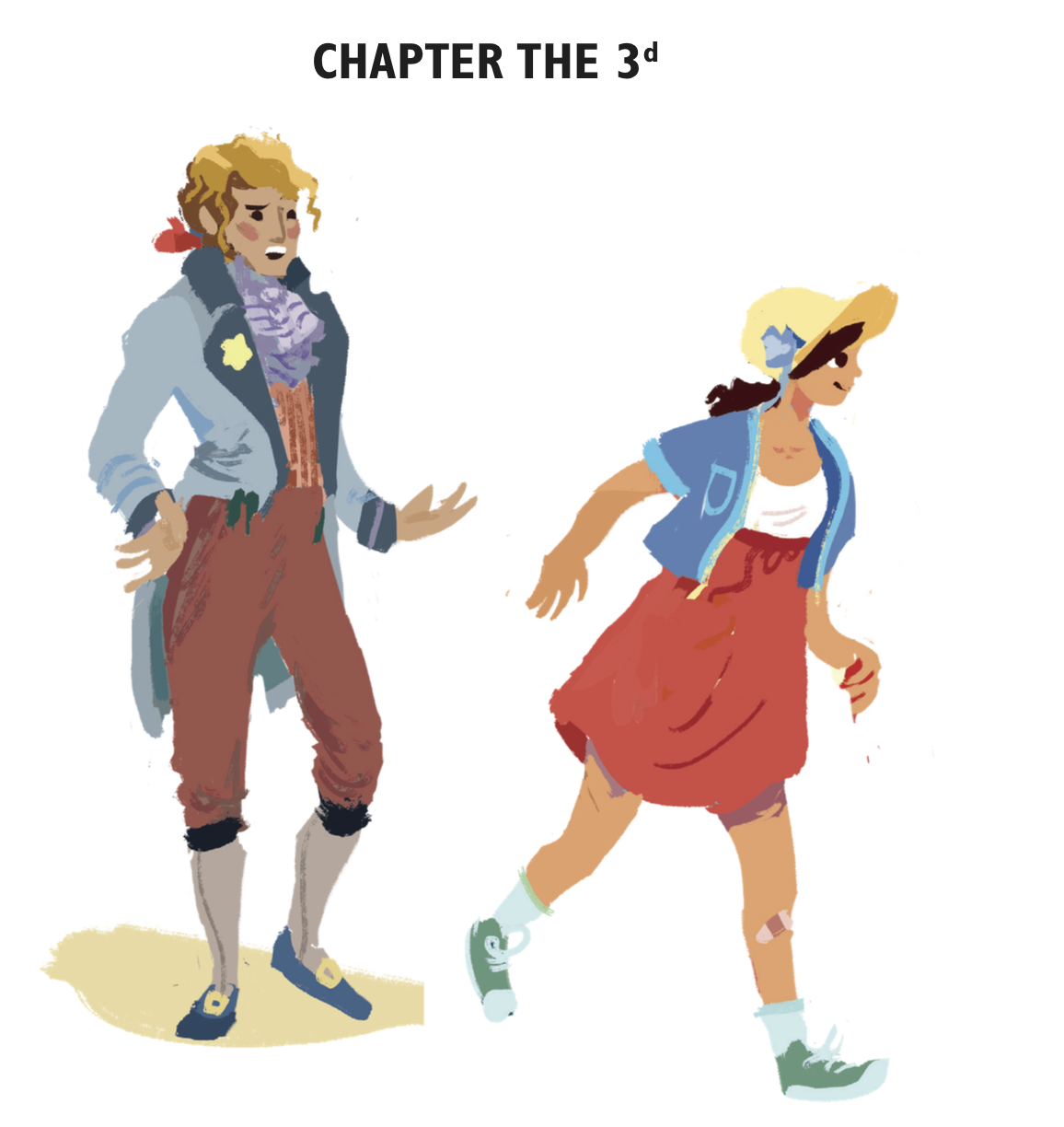
knocks over a chef as she devours ice cream,
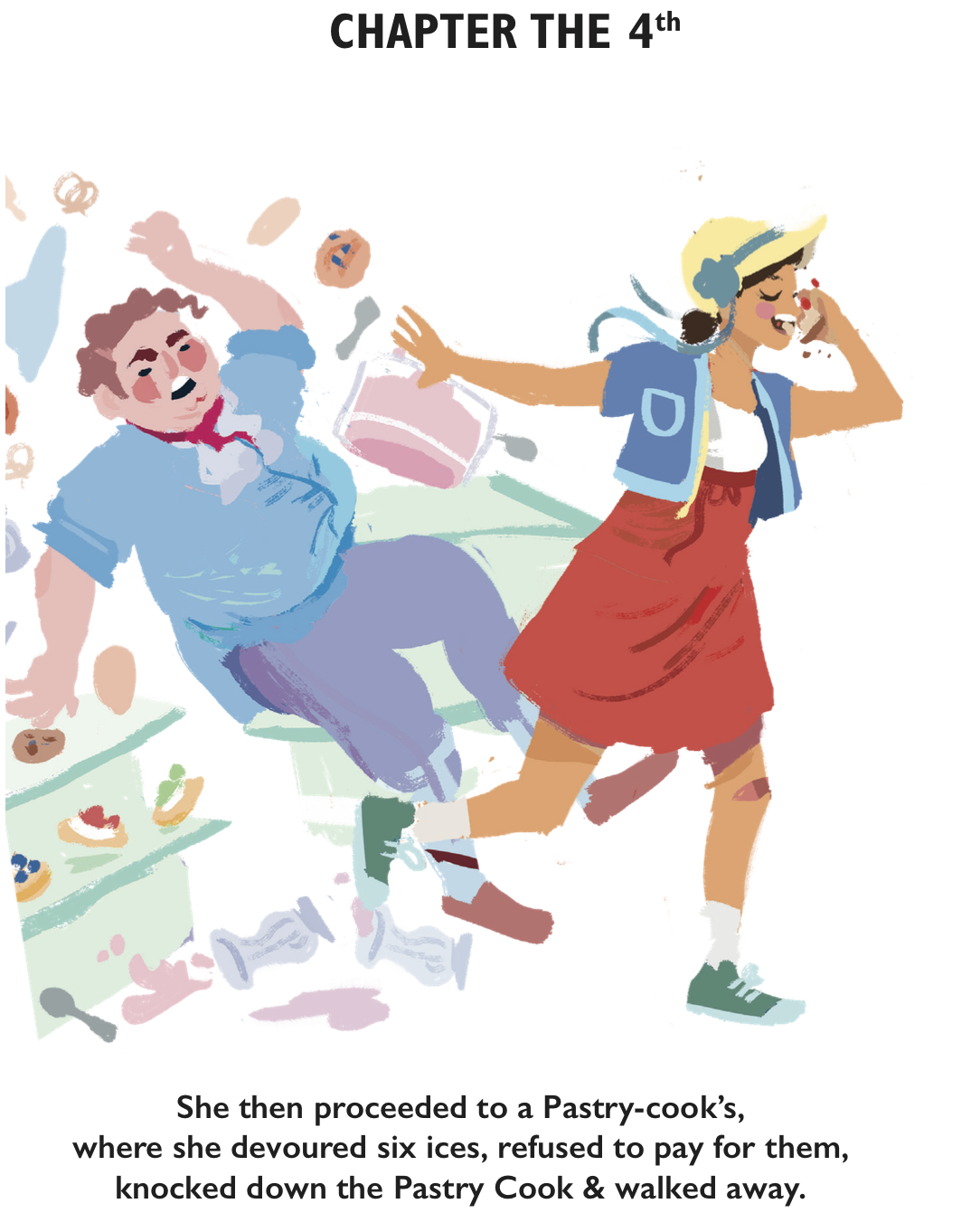
and goes on a whole host of other adventures! Since my critical portion explored how this brings new meaning to "children's literature," I printed the creative portion in a small, spiral-bound book.
Turning it in
After many long discussions with my amazing adviser, Professor Claudia Johnson, months of research, writing, drawing, filming, my first ever all-nighter as I put on the finishing touches, going over notes made by the amazing Katherine Hawkins who proofread my 100+ pages twice...
...I turned in my thesis and creative books to the English department!
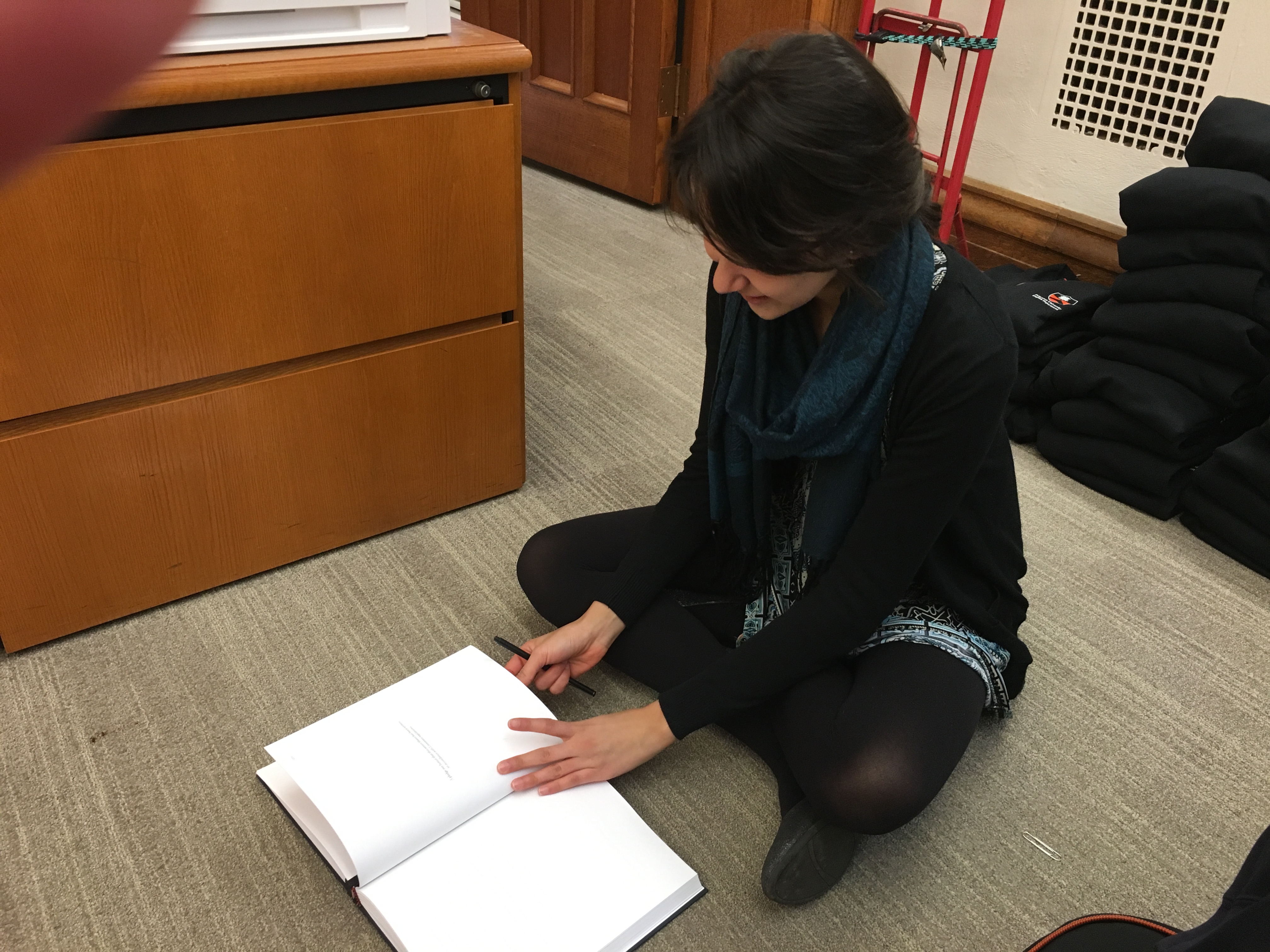
You know that feeling of when you turn something in thinking, "my body and mind feel like death, but I am so happy right now?" That's what this moment was for me.
Looking back, I'm not entirely sure how it all came together, but I think of the thesis with real love for the literature, gratitude to the English department for letting me pursue a creative-critical thesis, and a smile when I think of the happy desperation my fellow English major buddy and I shared, scooting around the library on those rolling office chairs, chasing and poking each other as midnight approached. Truly, a thesis is a sign of my academic maturation!
Also, I sliced my finger on a page just before I wrote my name, so the last page the Princeton honor pledge literally signed in a little blood.
